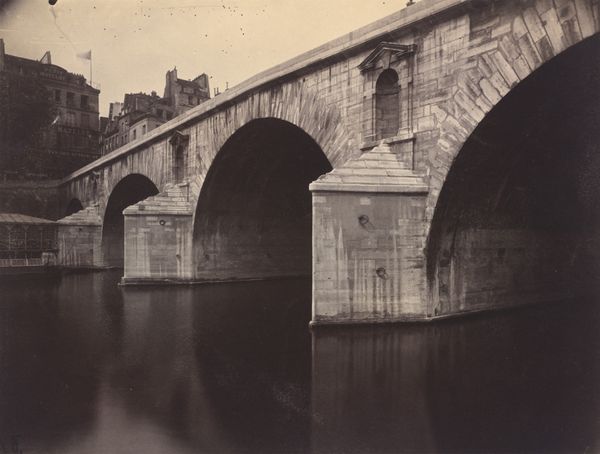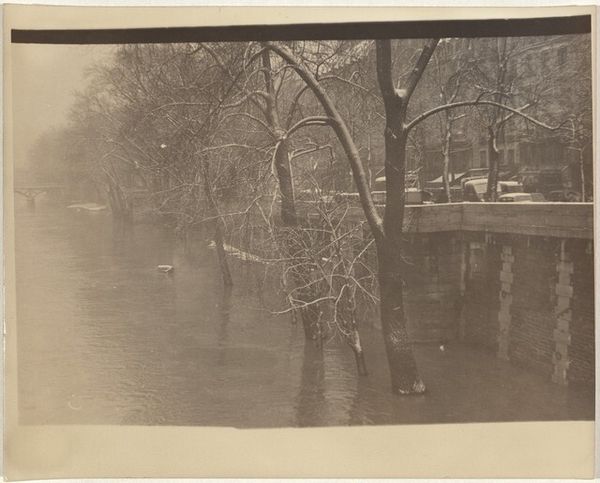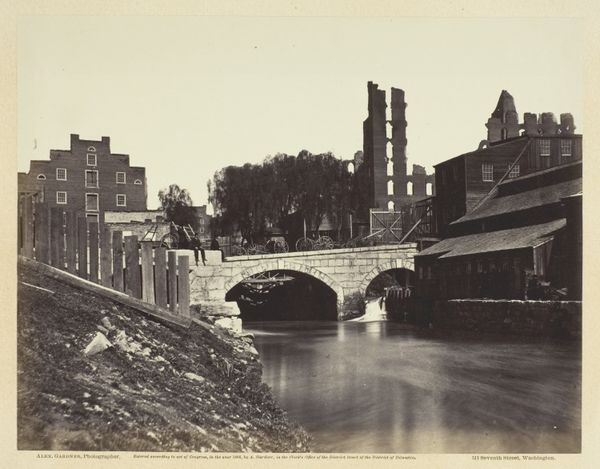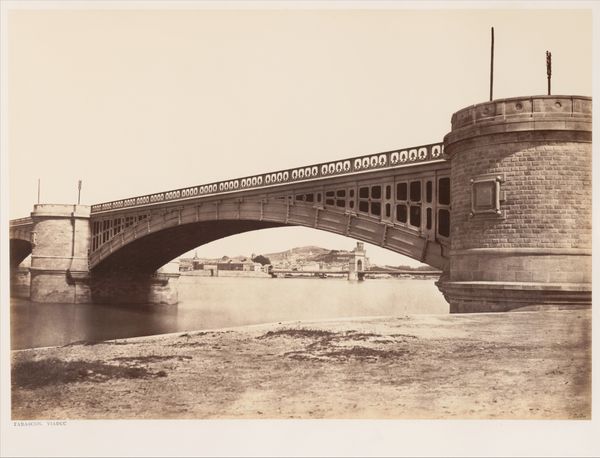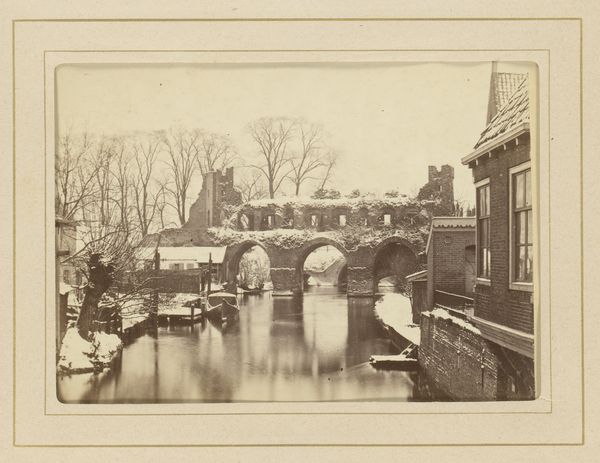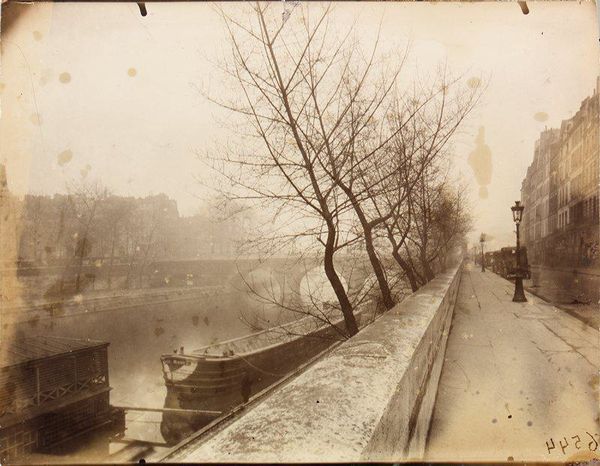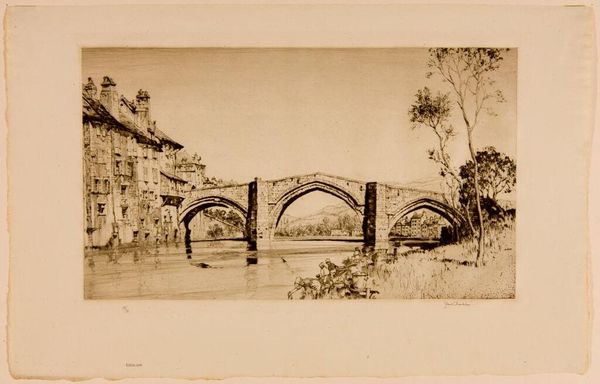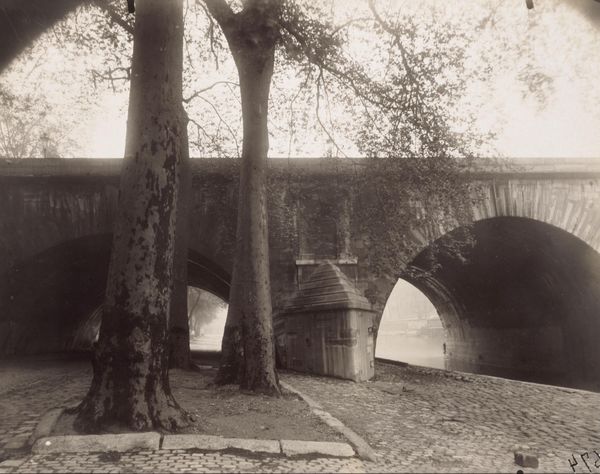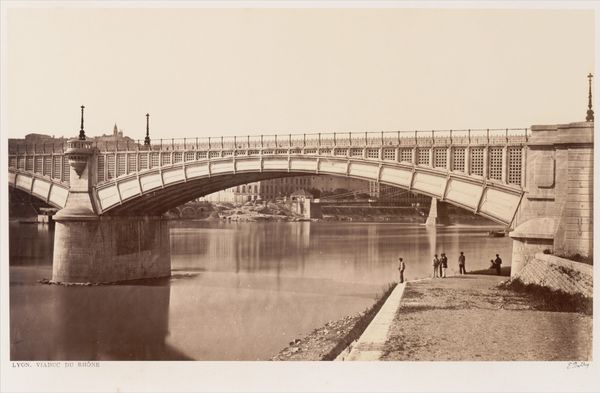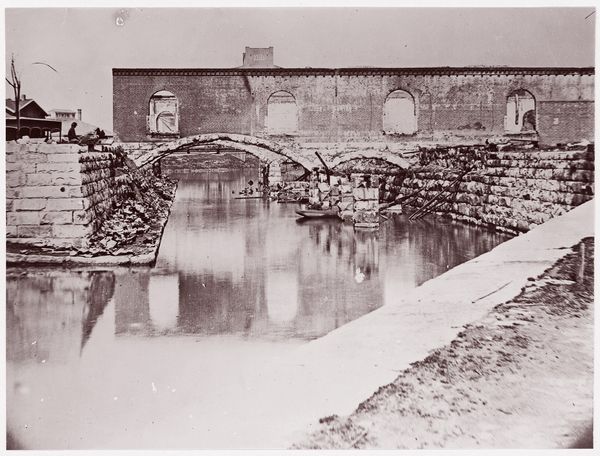
Dimensions: sheet: 17.7 x 21.7 cm (6 15/16 x 8 9/16 in.) overall: 35.6 x 39.4 cm (14 x 15 1/2 in.)
Copyright: National Gallery of Art: CC0 1.0
Editor: Here we have Eugène Atget’s “Le Pont Marie,” taken around 1903 or 1904, using the gelatin-silver print process. It's a monochromatic photograph. There's something very still about it, like a moment suspended in time. What stands out to you as you examine its composition? Curator: Immediately, the contrast arrests me. The rough-hewn texture of the stone bridge opposes the smooth, almost reflective, surface of the water. Note how the light etches the arches of the bridge, leading our eye from left to right. The placement of the boats in the foreground creates a recessive depth. Are you drawn to any specific formal element? Editor: I think the repetition of the arches, their semi-circular form is pleasing. Also the linear element from the barge gives an additional visual key that divides the plane horizontally. But are the boats supposed to lead the eye, because I find myself more drawn to the architectural details above? Curator: Indeed. Atget manipulates depth by juxtaposing foreground elements against the imposing architectural form. The boats offer a spatial anchor, if you will, giving us a scale in relation to the Pont Marie itself. Furthermore, the tonal range contributes to a sense of unified composition, doesn't it? There's a spectrum from near-white to deep sepia tones. What overall effect does this tonal gradation suggest to you? Editor: It makes me see that the composition of the image is deliberate. The shadows almost act as another formal key. I guess I initially saw it as a recording of the bridge, but I appreciate it on more artistic levels. Curator: Precisely. The interplay between light, shadow, texture and form transform what seems a mere recording into a study of spatial relationships and architectural volume.
Comments
No comments
Be the first to comment and join the conversation on the ultimate creative platform.
